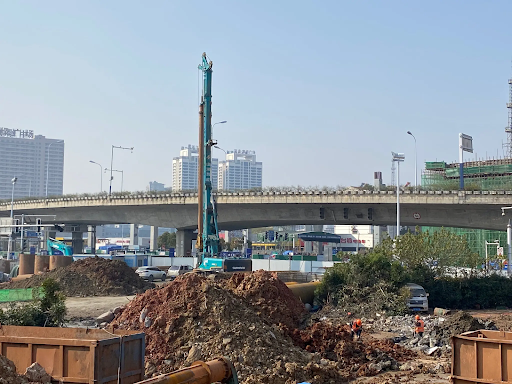Resurging COVID Cases in China Escalates Economics and Geopolitical Crisis
Quarantine workers enforcing the lockdown in Shanghai in mid-March. Photo: Qilai Shen/New York Times
On March 28 Shanghai, the biggest and the wealthiest city in China, was finally shut down due to the surging COVID-19 cases. The east Asia financial and supply chain center was known for its prompt and thorough response to the pandemic, yet the reluctance of enforcing official full scale shutdown. The change of the principle brought the review of the “China model” during the pandemic amidst the economics and foreign relations crisis.
In the early stage of the outbreak of the new coronavirus, China’s success and stability even in the face of an unprecedented pandemic leads Chinese nationals to believe that the one party authoritarian “China model” is proven to be more effective than the chaotic democratic system. China was prospering in different aspects in contrast to the most major Western countries.
In 2020, China was the only major economy that reported steady growth instead of collapsing like Japan, EU countries, and the US. In financial markets, investors showed growing confidence despite the tightened regulation on sectors such as crypto currencies. The correlation between the economic stability and the political model was clear.
However, the growth and stability are now facing new challenges. On economics and domestic policy, the inevitable shutdown created anxiety among citizens while forecasting the despair for small businesses. China’s policy for higher stability is to ensure the absence of positive COVID cases through any measure possible, which became increasingly hard after most other countries are gravitating toward living with the disease.
When shutdown became the necessary measure to stop resurging positive cases, struggles and separation anxieties spread across communities. Children tested positive were forced to be separated from their parents while small business owners worried about the loss of income from the initial half-city lockdown. The same investors that went bullish a year ago are now dumping Chinese stocks due to the pandemic uncertainty.
The uncertainty not only comes from pandemic response but also from the geopolitical crisis. The escalation of the Russo-Ukrainian war shook the investors’ confidence in Chinese financial markets. China’s economic support during Russia’s invasion in Ukraine, despite reinforcing the strategic foreign relation decision, created the possibility of future secondary economic sanction from western countries. China increasingly purchased food and energy from Russia, which has risked criticism from the international stage.
The situation may not be worrisome if not for the increasing unsatisfactory reactions from Chinese nationals. In the past, the citizens tolerated the intense regulatory environment and authoritarian regime in exchange for economic stability. However, there are growing accusations for the CCP of its tightening regulation on Chinese social media.
The same measures that guarantee economic growth are now costing thousands their jobs and income. Even more than the economic instability is the separation between family and their loved ones. This could be the concern and eventually a hidden time-bomb as president Xi is looking to win the third five-year term. As for now, this “China model” is facing geopolitical, pandemic, and regulatory challenges. Whether or not the system can get through the challenges will provoke a new wave of discussion about whether China should keep the mechanic.
Construction project in Hefei that created countless jobs to support China’s pandemic economy. Photo: Keith Bradsher/New York Times


